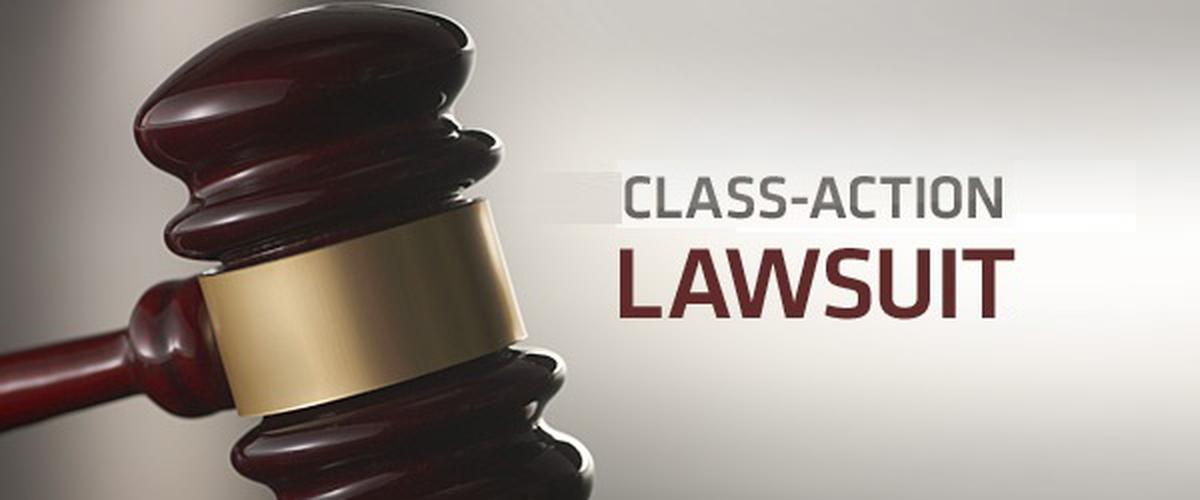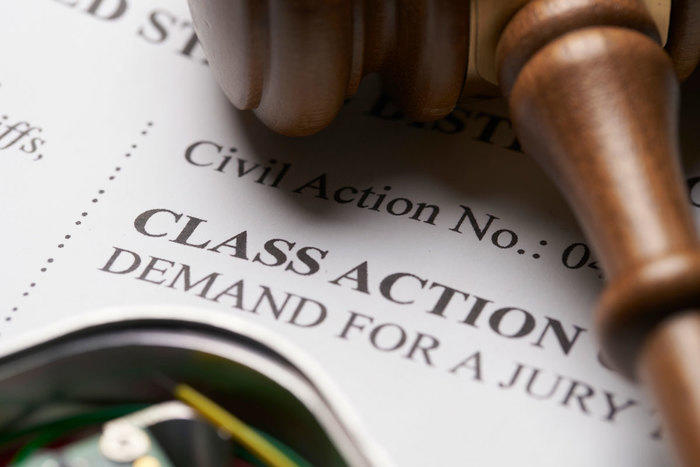Archer-Daniels-Midland Class Action Lawsuit: Your Legal Roadmap
Wiki Article
Discovering Course Action Claims: What You Need to Know
Course activity legal actions have actually become progressively prevalent in today's legal landscape, with individuals joining pressures to prosecute against organizations and corporations. In this conversation, we will certainly explore the ins and outs of class activity claims, clarifying their definition, the needs for filing, and the potential benefits and drawbacks involved. Moreover, we will dive right into the actions associated with a class action legal action and analyze some current spots instances that have actually formed this location of regulation. Recognizing the complexities and subtleties of class activity lawsuits is important for anyone looking for justice in a collective manner, so let's start our exploration with each other.The Interpretation of Course Action Legal Actions
A course action legal action is a legal activity submitted by a group of people who have comparable claims against a defendant. Class action legal actions are commonly brought when the number of possible plaintiffs is also huge for specific lawsuits to be useful.Among the crucial elements of a class activity suit is that the lead plaintiff, likewise called the class rep, stands for the passions of all the class members. The court appoints the lead plaintiff based upon their ability to rather and adequately represent the class. The lead plaintiff works carefully with the class action attorney to seek and construct a solid instance payment or various other solutions in support of the whole course.
In order for a class action suit to continue, the court must accredit the course. This suggests that the court identifies that the claim fulfills specific demands, such as numerosity (a large adequate number of course members), commonness (common concerns of legislation or fact), typicality (the insurance claims of the lead complainant are typical of the course), and adequacy of representation (the lead complainant and course advice can representing the class's interests) As soon as the class is licensed, the claim can move on, and any type of judgment or negotiation got to will put on all course members unless they select to opt-out.
Course action claims serve a crucial purpose in supplying accessibility to justice for people who may not have the sources to pursue their cases separately. They also promote performance in the legal system by combining similar claims right into a solitary action, reducing the problem on both the court and the events involved.
Needs for Submitting a Class Action Claim

One more demand is that the class must be adequately many. The exact variety of class participants needed might differ relying on the territory and the nature of the situation. It is typically anticipated that the course needs to be huge sufficient that signing up with all the private plaintiffs right into a solitary legal action is extra effective than having multiple different legal actions.
In addition, it is essential that the class rep, that is the specific or entity bringing the legal action in support of the class, has common cases and defenses to those of the class members. The representative must likewise be able to adequately and fairly represent the rate of interests of the entire class.

Benefits and Disadvantages of Class Action Claims
Class activity legal actions provide both advantages and drawbacks for complainants and offenders associated with the lawful procedure. On the one hand, among the significant benefits of class activity claims is that they provide a efficient and cost-effective method for people with comparable claims to pursue justice jointly. By settling numerous comparable situations into one suit, course activities improve the legal process and save time and sources for both accuseds and complainants.One more benefit of course action suits is that they enable individuals with minimal resources to seek payment for their problems. In situations where the prospective recuperation is tiny, individual claims more tips here may not be economically practical. Nevertheless, by joining pressures in a class action, plaintiffs can merge their resources and boost their chances of getting a reasonable resolution.
In addition, class actions can advertise social change by holding companies accountable for their actions. By accentuating widespread misbehavior or malfunctioning products, course actions can pressure companies to transform their practices, improve item safety and security, or carry out reforms.
Nonetheless, course activities also have downsides. One possible downside is that specific complainants may have restricted control over the litigation procedure and the supreme end result of the situation. The lead complainants and their attorneys commonly make crucial choices in behalf of the whole class, which might not always align with the individual interests of each class participant.
Additionally, course activities can be prolonged and taxing, typically taking years to get to a resolution. The intricacy and size of these legal actions can bring about delays and prolonged lawsuits, which can be frustrating for both complainants and accuseds looking for a prompt resolution.
Steps Associated With a Course Action Suit
The process of a find more course activity suit generally begins with the identification of a potential course and the filing of a problem. As soon as a team of individuals who share comparable claims versus an offender is determined, the lead complainant, or class representative, submits an issue in behalf of the entire course. This grievance outlines the claimed misdeed and seeks damages or other relief for all members of the class.After the grievance is filed, the court will figure out whether the instance meets the requirements for course qualification. These demands generally consist of numerosity (a big sufficient course), commonality (similar lawful insurance claims), typicality (the lead plaintiff's claims are representative of the course), and adequacy of depiction (the lead complainant and their lawyer can adequately stand for the class's interests)
If the court licenses the class, notice is provided to all possible class participants, providing the opportunity to opt-out if they want to pursue their very own individual claims - Future FinTech class action lawsuit. If a sufficient number of class members remain, the instance will continue to the exploration phase, where both sides gather proof and information relevant to the cases
Following discovery, the celebrations might involve in settlement arrangements or proceed to trial. If the instance mosts likely to trial and the class prevails, the court will certainly figure out the appropriate damages or relief to be awarded to the class participants.
Current Spots Class Action Claims
With a strong understanding of the steps associated with a course activity lawsuit, it is currently important to check out some current spots situations that have actually made a significant impact in the lawful landscape. Archer-Daniels-Midland class action lawsuit. These instances have not only shaped the means class activity lawsuits are conducted but have also caused modifications in various sectorsOne such landmark situation is the Volkswagen exhausts detraction, which led to the largest course activity negotiation in automotive background. This deception affected millions of consumers worldwide, leading to a class action lawsuit.
An additional notable situation is the Johnson & Johnson talcum powder suit. Thousands of ladies submitted legal actions against the business, claiming that their talcum powder items triggered ovarian cancer cells.
These recent spots cases demonstrate the power of course activity suits in holding companies liable from this source for their actions and seeking justice for damaged people. They act as instances of exactly how course action claims can bring around significant changes and safeguard the civil liberties of consumers.
Conclusion
In verdict, class activity lawsuits are a lawful system that allows a group of people to collectively look for justice for a typical complaint. While they supply several advantages such as performance and cost-effectiveness, there are likewise drawbacks such as possible for restricted compensation and extensive lawful process. Comprehending the demands and steps entailed in submitting a class activity suit is crucial for people looking for to seek this lawful method. Recent site class action claims have highlighted the importance of such situations in promoting for customer legal rights and company liability.One of the crucial components of a class activity lawsuit is that the lead plaintiff, additionally recognized as the course agent, represents the interests of all the course members.In order for a class action legal action to proceed, the court must certify the class. This means that the court identifies that the legal action meets particular demands, such as numerosity (a huge adequate number of course members), commonness (typical inquiries of legislation or fact), typicality (the cases of the lead complainant are normal of the class), and competence of depiction (the lead complainant and class advice are qualified of standing for the course's passions) Once the class is accredited, the legal action can relocate onward, and any kind of judgment or negotiation reached will use to all course members unless they choose to opt-out.
The procedure of a class activity claim usually begins with the identification of a prospective course and the filing of a complaint.
Report this wiki page